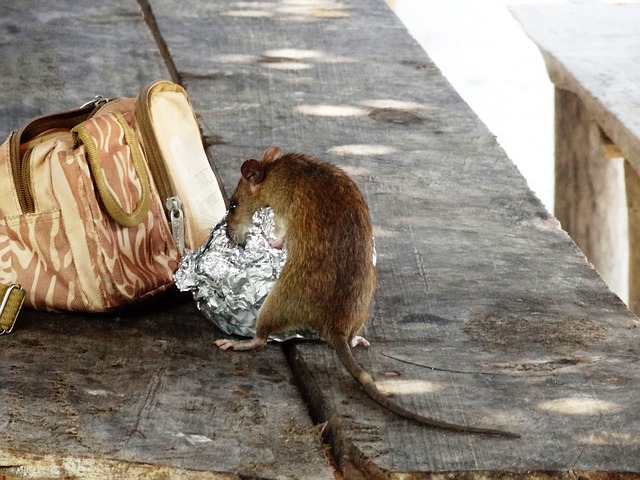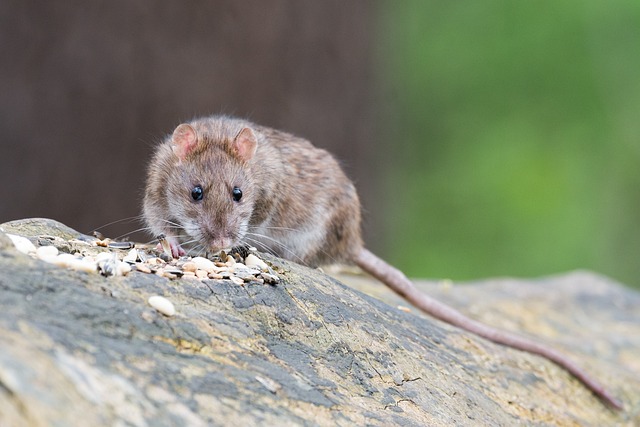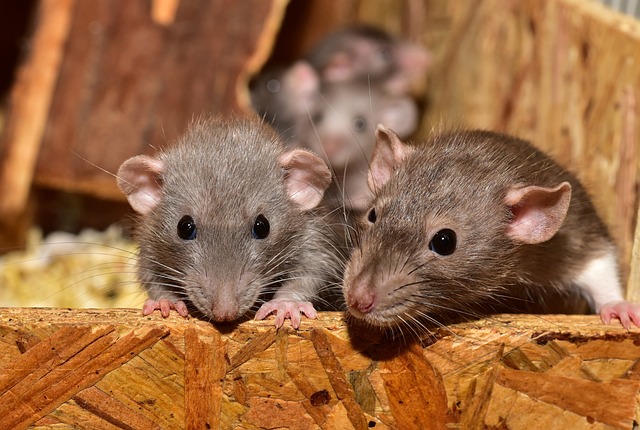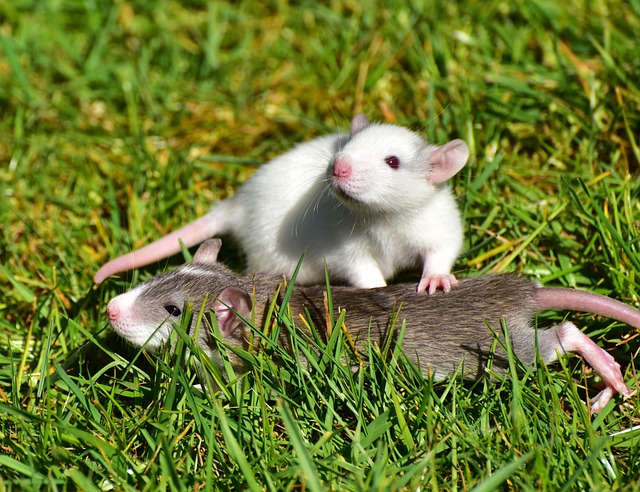The Life Expectancy of Rats
Rats are popular pets, but how long can they live? It’s important to understand a rat’s lifespan to provide them with the best care possible and ensure its well-being. In this post, we’ll discuss the factors that impact a rat’s lifespan, the average lifespan of rats, the signs of aging in rats, and how to how to extend a rat’s lifespan. We will also let you know everything about the life expectancy of wild brown rats!

Factors that Affect Rat Lifespan
Genetics and Breeding Genetics play a critical role in determining the lifespan of a rat. Breeding is a factor that can contribute to a rat’s longevity. Still, inbreeding can also lead to health issues that shorten lifespan.
Diet and Nutrition
A rat’s diet and nutrition are essential factors that can impact its lifespan. A balanced diet with a variety of proteins, carbohydrates, and fats is necessary for their overall health. High-quality rat food supplemented with fresh fruits and vegetables is the foundation of their diet.

Environment and Living Conditions
The environment and living conditions of a rat can also influence its lifespan. A rat requires a spacious, hygienic living area free from drafts and direct sunlight. A rat living in overcrowded and unsanitary conditions is more susceptible to disease and infections that can shorten its lifespan.

Disease and Illness
A pet rat can experience several diseases and illnesses that can affect its lifespan. Common health problems for rats include respiratory infections, tumors, and dental issues. Regular check-ups with a veterinarian can detect and treat these issues early, increasing their lifespan.
Veterinary care
Regular veterinary care is critical to ensure a rat is healthy and receiving the proper treatment for illnesses and injuries. Annual check-ups help to identify health problems early, providing a better chance of extending their lifespan.
Average Lifespan of Rats
Different Types of Rats and Their Lifespans Rats come in various breeds, which can impact their lifespan. On average, a rat lives for two to three years, with some living up to four years. Some exceptional cases have seen rats live up to seven years.

Average Lifespan of Pet Rats
Pet rats, also known as fancy rats, have a longer lifespan than wild rats. On average, pet rats live for two to three years, with proper care, some living up to four years. Males tend to have a shorter lifespan than their female counterparts, likely due to higher testosterone levels.
Comparison with Wild Rats
Wild rats have a shorter lifespan than pet rats, living for only one to two years. The difficult living conditions and the lack of veterinary care contribute to their shortened lifespan.
The issue with wild rats
Wild rats pose a significant threat to homeowners, particularly those in urban areas. These rodents can infiltrate homes through tiny openings, such as cracks and crevices in walls, roofs, and floors. Once inside, they can cause extensive property damage and jeopardize human health.
Disease transmission is one of the primary hazards associated with wild rats in your home. These pests carry many diseases, including hantavirus, leptospirosis, and salmonellosis. Humans can contract these ailments directly via rat feces, urine, or saliva or indirectly through contaminated food and water. The risk of disease transmission is higher in households with seniors, kids, or people with compromised immune systems.
Another peril of wild rats in your home is property damage. These critters can chew through electrical wiring, causing fires or power outages. They can also nibble on pipes, leading to leaks and water damage. Wild rats can also harm insulation, drywall, and other structural materials, necessitating expensive repairs.
Lastly, wild rats in your home can significantly affect your mental health and overall well-being. The idea of rats scurrying around your house can be disconcerting, leading to stress and anxiety. Additionally, their presence can cause sleep disruption and negatively impact your quality of life.
To minimize the risks associated with wild rats in your home, taking precautionary measures is vital. This involves sealing any openings in walls, roofs, and floors, storing food in airtight containers, and keeping your home neat and tidy. If you suspect a rat infestation in your home, it’s best to seek professional help. Specialized pest control services can safely and effectively eradicate rodents and prevent their return.

The Average Rat Life Cycle
Understanding the average rat life cycle involves examining four stages: birth, infancy, adolescence, and adulthood. The gestation period for a female rat is about three weeks, and she can give birth to a litter of 6 to 12 pups. The newborns are hairless, deaf, and blind and rely entirely on their mothers for warmth, nutrition, and protection.
In the infancy stage, lasting two to three weeks, the pups experience rapid growth and develop their coordination and motor skills. They explore their surroundings, open their eyes and ears, and become more curious about the world around them. The mother rat continues to provide milk and care for her young during this time.
Adolescence begins at around three weeks, and the young rats become more independent. They start to eat solid food and learn essential social and survival skills from their mother and other rats. During this stage, they develop their unique personalities and preferences, exhibiting a range of individual traits.
Rats reach adulthood at around six months of age and become sexually mature. At this stage, they can mate and reproduce. They can live for up to four years with proper care, nutrition, and veterinary attention.
It’s important to note that the average rat life cycle can vary based on genetics, diet and nutrition, living conditions, illness and disease, and veterinary care. By providing your pet rats with a healthy and safe living environment, regular veterinary check-ups, and a balanced diet, you can help them live a long and healthy life.
How to Extend Your Rat’s Lifespan
Proper Diet and Nutrition
A balanced diet and proper nutrition are critical in extending a rat’s lifespan. High-quality rat food supplemented with fresh fruits and vegetables is necessary. Avoid feeding rats sugary and fatty foods, which can contribute to health problems and shorten their lifespan.
Clean Living Conditions
Rats require a spacious, clean living area to thrive. Regular cleaning of their living quarters and maintaining their environment’s hygiene can prevent diseases and infections that can shorten their lifespan.
Regular Veterinary Check-ups
Regular veterinary check-ups can detect and treat health problems early, extending a rat’s lifespan. Annual check-ups can identify and treat health problems like respiratory infections, tumors, and dental problems.
Socialization and Exercise
Rats are social animals that require regular socialization and exercise to stay healthy and happy. Play and exercise can improve their mental and physical health, leading to a longer lifespan. Providing toys, tunnels, and climbing structures can keep them mentally stimulated and active.
Signs of Aging in Rats
Physical Changes
As rats age, they may experience physical changes such as weight loss, reduced mobility, and a less shiny coat. Tumors are also more common in older rats, impacting their lifespan. Dental problems like overgrown teeth and gum disease are common in aging rats and can affect their eating ability.
Behavioral Changes
Rats may exhibit behavioral changes as they age, becoming less active and playful and sleeping longer. They may also become more sensitive to noise and changes in their environment. Monitoring your rat’s behavior and seeking veterinary care if you notice any changes can help extend its lifespan.
Conclusion
Understanding a rat’s lifespan is critical to providing the best care possible for your pet. Factors that affect rat lifespan include genetics, diet and nutrition, environment and living conditions, disease and illness, and veterinary care. Proper care and nutrition can extend the average lifespan of a pet rat up to four years.







